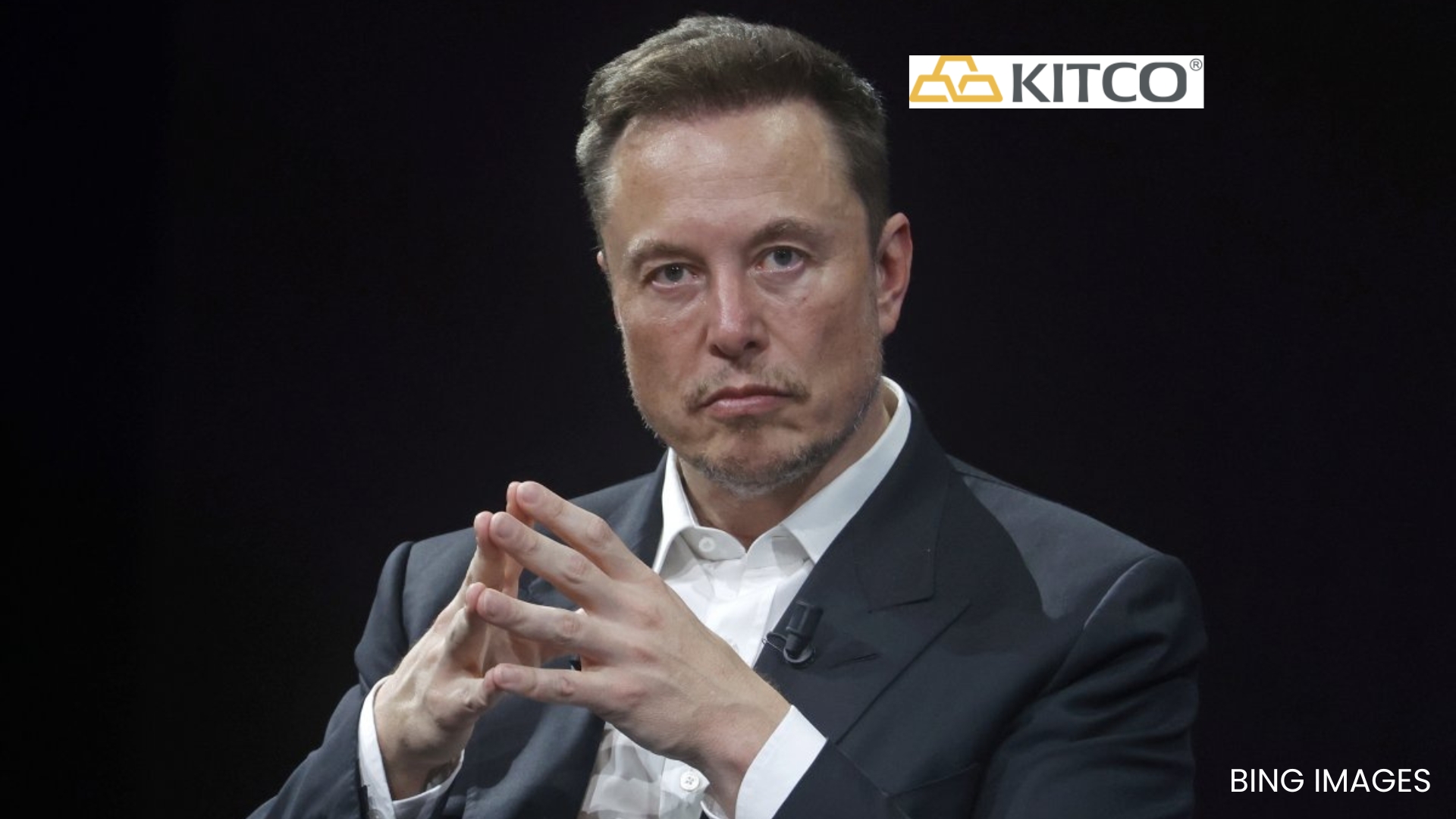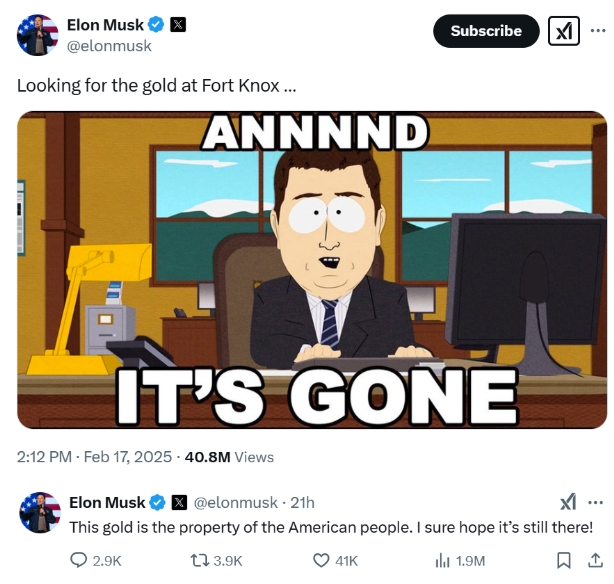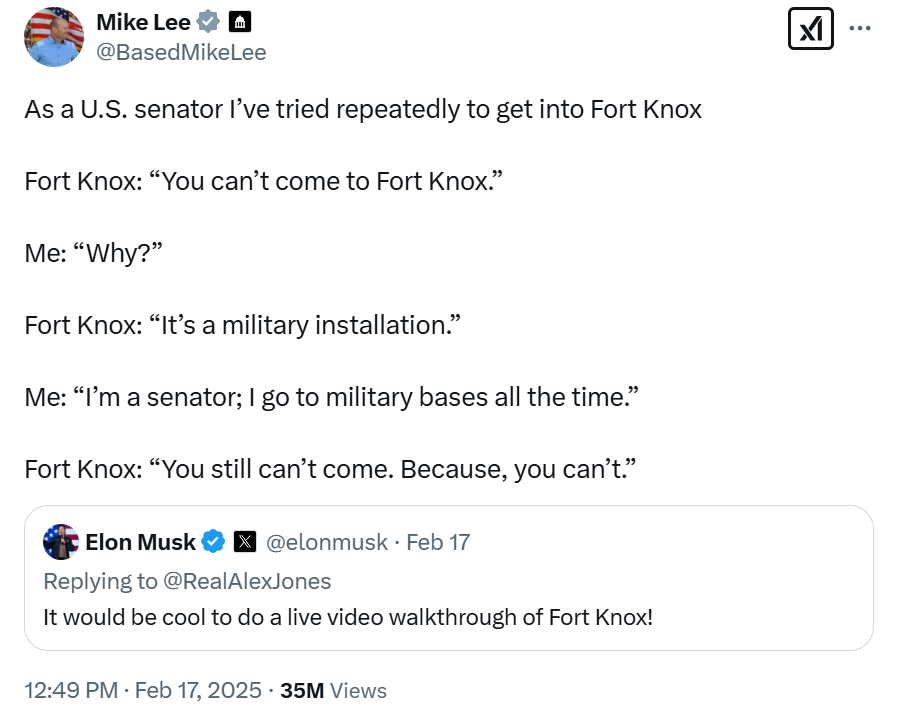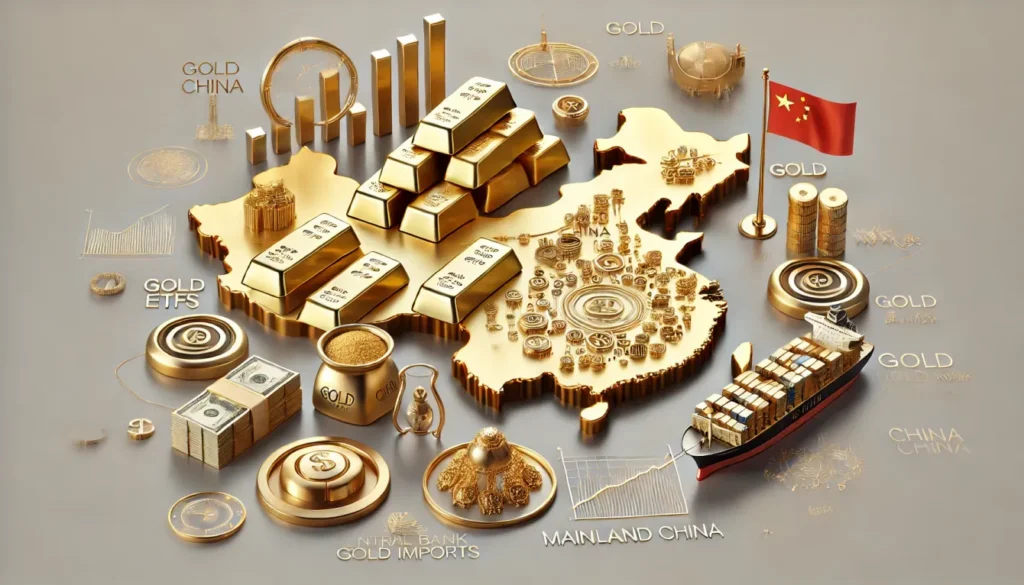
(Kitco News) – Fresh off his recent forays into the Treasury Department’s payment systems, tech billionaire Elon Musk is now gearing up to conduct an in-person audit of the United States’ gold reserves at Fort Knox on behalf of the Department of Government Efficiency (DOGE).
Musk announced his intentions on Monday afternoon through a pair of posts on his X platform, implying that he doubts whether the $425 billion in bullion is really there.

Republican Senator Rand Paul of Kentucky, the state where Fort Knox is located, said in an interview with Fox News on Monday that he invited Musk to review the gold reserve after failing to gain access to the facility for a decade.
"I think some of them may not think it needs to be audited all the time, but I think the more sunlight, the better, more transparency, the better,” Paul said.
The Senator also insisted that even though the U.S. dollar hasn’t been explicitly backed by gold for over 50 years, the precious metal still provides some of the value undergirding the greenback.
“It brings attention to the fact that gold still has value and implicitly, not explicitly, but implicitly, gold still gives value to the dollar,” Paul said. “That's why we don't get rid of it. We've got it. The IMF has it, the World Bank has it. Most of the central banks… around the world have gold, and it's an implicit trust that the dollar still has some backing.”
With over 8,100 tonnes as of the end of 2024, according to the World Gold Council, the United States has far and away the world's largest gold reserve. The lion’s share of the nation’s bullion is stored at the 108,955-acre Fort Knox complex, with the balance kept in the Federal Reserve Bank of New York.
Paul said he’s been trying “to make sure it's all there” for over 10 years without success. He received permission to enter Fort Knox in 2017 during the first Trump administration, but the timing of the trip didn’t work out. Instead, then-Treasury Secretary Steve Mnuchin and Sen. Mitch McConnell, R-Ky., visited the vaults without him, and returned claiming the gold was present.
“I didn't get to go down, but the Secretary of Treasury and the senior Senator from Kentucky did go down and attest that they believe they saw the gold down there.”
Musk has not announced when he and DOGE staff intend to visit Fort Knox or what methods he would use to verify the quantity and authenticity of the bullion. However, in response to an earlier post from Senator Mike Lee (R-Utah), who also shared his frustrated attempts to visit Fort Knox, Musk seemed to suggest that a live video walkthrough of the top-secret facility may be part of the plan.

U.S. gold reserves have been getting more attention than they have in decades as members of the Trump administration have suggested that the precious metal could play a part in their economic plans amid growing speculation that the U.S. government could adjust the valuation of its reserves.
The U.S. Treasury holds the world's largest gold stockpile of 8,100 tonnes, but the value of this gold hasn't changed since 1972, when the price was set at $42 an ounce.
Some analysts have noted that if the government revalued its gold reserves at current prices, which are above $2,900 an ounce, it could add more than $760 billion to the Treasury Department's coffers.
Speculation surrounding the U.S. government's gold hoard started to ramp up earlier this month after newly-minted Treasury Secretary Scott Bessent said that he would "monetize the asset side of the U.S. balance sheet."
However, on Feb. 13, Bloomberg reported that an unnamed source said this idea was not "under serious consideration" among President Donald Trump's top economic advisers.
Some market analysts have also suggested that this might not be the best way for the government to improve its balance sheet.
In a note to Kitco News, Robert Minter, Director of ETF Strategy at abrdn, said that higher government gold prices won't materially change the government's balance sheet problems.
"Marking this gold to market (~$3,000/oz) improves the asset-liability ratio of the Fed but only gets it into the neighborhood of major U.S. banks like Goldman Sachs," he said. "The U.S. Federal Reserve has a ~12:1 asset-liability ratio (leverage ratio), with revalued gold (every $1 of assets has $12 of liabilities). Major U.S. banks have a ~11:1 asset-liability ratio. The U.S. Federal Reserve has a ~179:1 asset-liability ratio, with $42 gold (every $1 of assets has $179 of liabilities)," he wrote in the note.
Nicky Shiels, Head of Research and Metals Strategy at MKS PAMP, said in a note on Thursday that the funds generated would be a drop in the bucket as U.S. debt is north of $36 trillion. While this remains a hypothetical debate, Shiels said it’s unclear whether this would be bullish or bearish for gold.
However, she did highlight some risks, as this would be a one-off boost for the Treasury Department. A second risk is that this revaluation would come as gold prices are trading near all-time highs.
This is not the first scheme involving the government's gold holdings that potential Trump advisers have floated in the news.
Stephen Miran, Trump's nominee to lead the White House Council of Economic Advisers, has suggested that the U.S. government could sell its gold and use the proceeds to buy other currencies. This would weaken the U.S. dollar, giving the nation a trade advantage.
Selling the U.S. gold reserves would also impact the reserves of emerging market central banks that have been accumulating the precious metal at record rates for the last three years.
Meanwhile, last year, Judy Shelton, who has been floated as a potential pick by President Donald Trump to lead the Federal Reserve, advocated for the government to issue bonds payable in gold.
Story by Earnest Hoffman, Kitco



